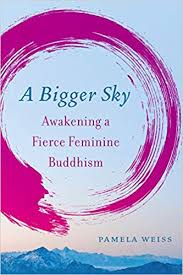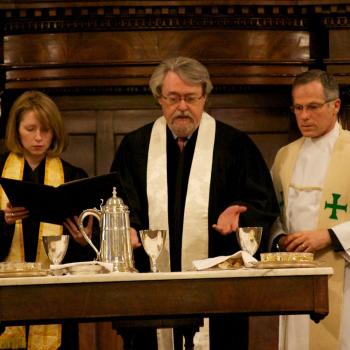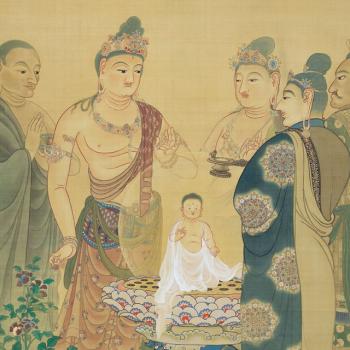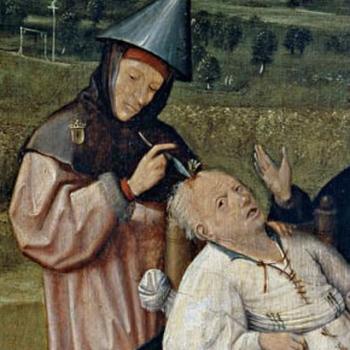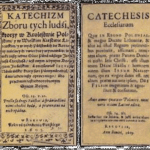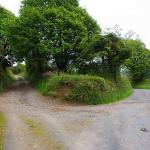TOWARD A SOULFUL ZEN
A Review of Pamela Weiss, “A Bigger Sky: Awakening a Fierce Feminine Buddhism”
James Ishmael Ford
I recently received a review copy of “A Bigger Sky: Awakening a Fierce Feminine Buddhism” by Pamela Weiss. It’s due out at the beginning of June this year. I was happy to get it. Sensei Weiss is interesting for a number of reasons. But certainly not the least of them is that she is the only lay person I’m aware of who has received full dharma transmission within Shunryu Suzuki’s Zen lineage.
Weiss Sensei certainly is not the only householder Zen teacher. In fact, the reclamation of dharma transmission for non-monastics is one of the hallmarks of our emerging Western Zen. In Asia it is unusual, but there has never been a hard connection between ordination and transmission. Within the mists of our mythic origins Dajian Huineng was named the sixth ancestor based exclusively on his demonstrable insight. He was at the time a lay brother, not ordained, who in all likelihood had not even sat in the meditation hall. His work was to serve in the kitchens. Scattered through China’s history there have been lay adepts and dharma successors.
Here in the West the first serious rooting of a Zen community was the San Francisco Zen Center. It belongs to the Japanese school of Soto Zen. Japanese Zen in both its Soto and Rinzai lineages have taken on different characteristics than other East Asian schools. One is a shifting in ordination from the ancient Vinaya monastic codes.
Although now better than a thousand years old, Japanese ordination no longer requires celibacy and most of its clerics end up serving roughly equivalent roles to parish priests. Think Anglican priests as opposed to Catholic for the roughest of comparisons. But for reasons I’ve not been able to untangle the Soto school uniquely has collapsed the rites of dharma transmission into its ordination system. This matters to us here in the West because the oldest and two of the three largest of Zen communities are Soto.
These three largest Zen lineages in North America are the San Francisco Zen lineage, sometimes called Branching Streams and at other times the Suzuki lineage, the White Plum established by Taizan Maezumi and the Kwan Um School of Zen founded by the Korean missionary master Seung Sahn. I can’t say which is largest but taken together these three schools dominate the shape of Zen in North America.
The vast majority of teachers within the Kwan Um School are lay practitioners. And the White Plum lineage while also part of the Soto tradition has numerous lay teachers. I suspect in large part because they depart significantly from traditional Soto formation, instead relying heavily on a restored koan curriculum. But the deservedly renowned San Francisco lineage had not crossed this line, acknowledging full and independent lay dharma successors. Until, that is, Pamela Weiss.
I’m coming to think lay isn’t actually the right term. These are not amateurs or hobbyists. Following the poet and lay teacher Peter Levitt, I’m coming to think the correct term is probably Householder. That is householder is the leading characteristic as priest is with the ordained in the Japanese inheritance and monk or nun within Vinaya schools. But all can be, and occasionally are masters of the Zen way.
I have to admit beyond knowing Pamela Weiss having received dharma transmission in Suzuki Roshi’s lineage, I didn’t know much about her, her background, or, well, anything, really. But now we have A Bigger Sky. Or, soon will. As I said it comes out in June. Like many of our current dharma books, A Bigger Sky is also a memoir. Appropriate, I feel, because we who are writing these books are living into the dharma. And the stories of the dharma taking shape here in the West are our stories. And, we know the worlds are woven out of stories.
There are scholars, and their academic distance, making sure we understand the tradition within which we are living our spiritual lives. And bless them. We need them. Very much. But, we also, at least as much, need living examples. We need these stories.
As to this one, first I have to say how this book is a pleasure to read. I’ve read books that had important things to say but it is work to read them. Sometimes even calling for serious slogging through bad, or more commonly merely indifferent writing. Not A Bigger Sky. It’s just elegantly written, compelling, drawing the reader in. Drawing me in.
Sensei Weiss’ story of her dharma life is one many of us deeply committed to the practice will recognize. Certainly, among the old hands. The Zen thing is very much there. She spent a dozen years in serious Zen training within and around the San Francisco Zen Center. Actually, five of them resident at Tassajara monastery. So, she may be a lay person, but she’s had more monastic training than many priests I know.
But there’s more than that. She has trained with the Spirit Rock Western Vipassana community and is authorized to teach in that lineage, as well. Additionally, she trained in the Mahamudra tradition. So, she’s deeply immersed in the dharma life. And. So much in that “and.” As least as important. She has worked, married, helped to raise a step-child. You know, life. All of it.
These things, life experiences don’t of themselves make a Zen teacher. One does need to practice Zen to teach Zen. It’s not only awakening. Zen is also a cluster of practices. The question is what is the actual preparation one needs before being called a teacher? And coming away from reading Weiss Sensei’s book, among many important things, I couldn’t say what is more important. A fact I find really compelling.
Early on Weiss points out when she noticed the importance in the Heart Sutra, a spiritual text and the great pointer of the Zen schools, was not that all things are intrinsically empty, which is very much there. But that it is all about awakening to compassion. Weiss cites Dogen pointing to “robai-shin,” grandmotherly mind.
I think of the heart of wisdom. And I believe Sensei Weiss is pointing us true. There is a fierce compassion in her presentation. But it is earthy, it is physical, it is intimate. When Weiss describes our practice of intimate presence, she cites George Washington Carver, who even as a child was able to nurture and often restore dying plants. When asked how, he responded “If you listen to things and love them, they will reveal themselves to you.” That’s zazen.
But there is much more here. There are the actual ingredients of our lives, and how this Zen way is all about who we are. And not just the who contained within our skin. We are much larger. And she shows a bit the how of that within her own life. Weiss Sensei is part of that cohort who are mostly called JewBus, Jewish Buddhists.
There is an outsized number of convert Buddhists who are Jewish. Vastly out of proportion to their part of the general population. If you throw in how “convert” is a term of art signifying here a focus of attention, rather than abandoning something in favor of something else. People who become Buddhist, and specifically Zen practitioners, need not reject their original faith. The practice will change it, but it need not involve rejection. And. Well, Zen and lived Judaism in fact bring much to each other.
I’m currently teaching a class on Abrahamic scriptures at the University of the West’s chaplaincy program. About half of the students are monastics, of them the majority nuns from China plus a nun from Korea. In order to help them understand the contexts of these texts it is also necessary to understand the religious cultures they support. As I described the history of Judaism from the rise of Christianity all covered in a single three-hour session I felt the weight of generations of persecution of a minority faith. To look at Judaism from the destruction of the temple some two thousand years ago, the tales of exile, explusion, pogroms and casual murder piled up so close one after another after another. All of it culminating in the unspeakable horrors of the Holocaust. And how that sadness, more than a sadness, a sense of vulnerability infuses the lived religion.
Then in a Bigger Sky I read how she would walk up a staircase with her mother. Along the wall were pictures. “My mother would tap the glass with her long nails as she ushered me upstairs in bed at night. ‘He survived and he survived and she survived,’ she said. ‘The rest of them burned in the ovens.’” I realized her memory, Pamela Weiss’ memories were contoured by these events that took place before she was born.
I saw in her descriptions my own experiences in a completely different context. But what they shared in common was a pointer to how we are bigger, much larger, much larger than we think we are. Our spiritual paths reveal much of that, at least enough to help us let go of our ideas of who we are and to begin to live into who we are. A powerful moment for me. She skillful and only passingly using the technical terminology invites us to consider our true selves. She summarizes some of this quoting Buckminster Fuller noticing “I seem to be a verb.” And well here we are.
Now an important part of her book is that while there is no doubt Weiss Sensei is profoundly informed by the disciplines of the Zen traditions, she does not practice as a priest. In fact, she shows how one can grow in life and depth without the benefit of the cloister. She writes of the sometimes lovely often hard realities of a lived life in the world, of work, and relationship, and, tragedy. “Although I gained some understanding within the pristine setting of monastic life, it was that gift that helped transform idealism and naïve hopefulness into true maturity.”
The gift of course is the gift of her life. As it is. Weiss Sensei tells us “Round and round we go inn a process of ongoing unfoldment and ripening, of stripping away, unearthing, revealing and being revealed.” For her five years in a monastery. Then into the world. All of it grist for that mill.
I really found myself drawn into her working life. She helped develop a program. It was called Personal Excellence Program or PEP. As she described it, I found myself thinking of something that Elaine Pagels wrote in her famous study of gnostic versions of early Christianity. Pagels said in some schools one could not achieve full initiation into the community until one had written their own gospel. Looking at the ingredients of their lives, specific lives, not other people’s lives, they needed to come up with their own cookbook. PEP looked to me very much like Pamela Weiss writing her own good news, her own cookbook.
As the book proceeds it gets a little more theoretical. Rooted, deeply so, but reflection, nonetheless. She touches on two areas I find terribly important for us as we live our lives here at the dawn of Zen come west. Now throughout its history as Buddhism has encountered one culture after another it has engaged in dialogue. In fact, our own Zen school is the product of Buddhist encounter, clash, challenge, and a sort of synthesis with the wisdoms of China.
These encounters are usually religious. Religions, after all, are where a culture focuses its questions of meaning and purpose. And Zen come west is meeting our Western religions. The Jewish Buddhist encounter. For me, personally, the Buddhist Christian encounter. But, the other thing that is happening is how Buddhism, and especially Buddhist meditation schools are encountering Western Psychology.
Of the various forms of encounter the psychological one that has most touched me has been how Zen Buddhism and Jungian and for me specifically Archetypal psychology have challenged, clashed, and called in some forms of synthesis. Weiss Sensei points in some very rich directions. I love her summarizing and adapting Joseph Campbell’s hero’s journey in five parts, getting to the nub: A call. A departure. A struggle. Awakening. And, then, return.
Using her own life, she calls us to that journey of the heart. But she takes another myth and works with it for a while. She choses Inanna’s journey. It’s a story from ancient Summeria. I won’t summarize it here. But what is important, at least what I find as important is how she outlines the dream world of our authentic journey, our intimate spiritual paths.
We are unique. We are never to be repeated. And, we are as common as dirt. Even our dreams reveal this. And Pamela Weiss shows us in a handful of pages what this dream journey that is more real than real, might look like. It took my breath away.
The last part of the book is where we find the subtitle “awakening a fierce feminine Buddhism.” She recalls the stories of repression and oppression that women have experienced throughout history, and specifically within the history of our Buddhist schools. She doesn’t overweigh this, as I see it. But she doesn’t let us off any hooks.
But what is so wonderful about this, is how Weiss Sensei shows what it can mean when we open our hearts to the fullness of who we really are. As she says, “To integrate the feminine requires debunking the myth of the solitary individual who pulls themselves up by their own bootstraps. There is no such thing. Personal success is not an individual act. It includes the social and economic circumstances as an individual is born into and the opportunities those circumstances afford or deny.”
It opens us to aspects of our way that touch on the political. As I learned in my youth, the personal is political. But it isn’t calling us to a party, but rather to a revolution. It is a revolution of the heart that shows us how vast we really are. That “bigger sky.”
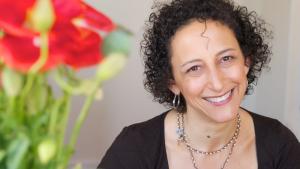
She explores a couple of ways this might look. But then near the end, she offers a pointer I found most helpful. Weiss Sensei tells how “A lesser-known version of the story (of the Buddha and his wife Yasodhara, one) (found within the Sarastiada school, and given voice by Buddhist professor and author John Strong) tells that Yasodhara and Siddhartha make love the night of his departure. After he leaves the palace, she remains pregnant for six years – the same six years as Siddhartha’s period of asceticism and wandering. In this version of the story, Yasodhara gives birth to Rahula at precisely the moment of Siddhartha’s awakening. Here, Yasodhara and Siddhartha travel parallel paths; not the same, but equally compelling and legitimate.”
Then Weiss Sensei asks us “What if Yasodhara’s experience – giving birth, raising a child, tending the garden, caring for the hearth and the earth – was also a complete path toward freedom and peace?” The question as I see it is what if we look to our actual lived lives, our lives here and now: can we see expressions of the Zen way that affirm a healthy life, and guarantee a wise death?
What I believe we are embarked upon in our various Zen communities, centers, institutes, projects, and collectives are heartful explorations of the depths of wisdom. Specifically, into the depths of the wise heart.
We are exploring the many bodhisattva ways. It is all about awakening to compassion. Weiss cites Dogen pointing to “robai-shin,” grandmotherly mind.
Most of these projects will disappear, the product of a moment. Well, in time, all things pass away. But we are seeing, I believe, I genuinely believe, the contours of our emerging Western Zen. It is messy. It has several faces. Most importantly is that grandmotherly mind, the heart mind, the mind of compassion. This, to use a term not normally associated with Zen Buddhism, it is soulful. It is rich. It is worthy.
Sensei Pamela Weiss shows what that looks like.
May we all find our way into this soulful, grandmotherly, Zen way…


